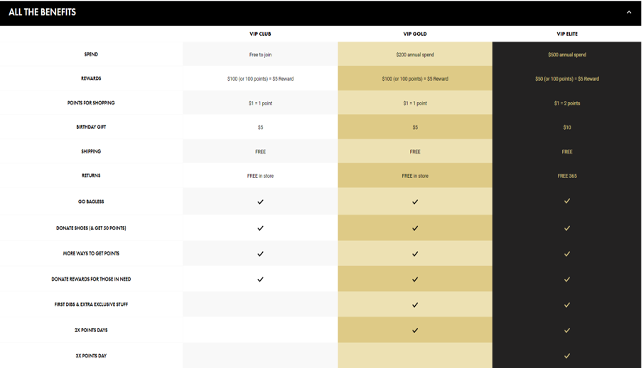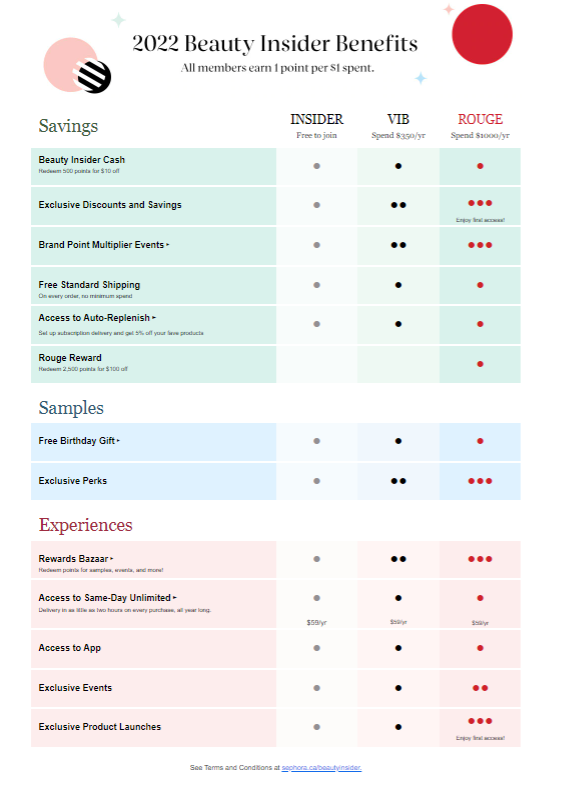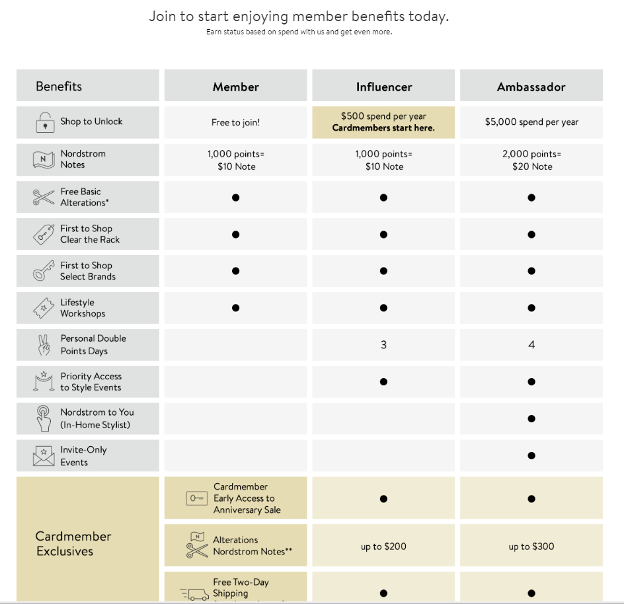A tiered loyalty program is a customer incentive program that breaks rewards down by levels - or tiers - delivering more rewards to higher tiers. Customers progress through the tiers as they spend more money with the brand or perform activities such as referring others or leaving reviews.
Most tiered loyalty programs are points-based, where customers earn points for every dollar they spend on products. As they earn more points, they progress to higher tiers. Points-based loyalty programs are easy for customers to understand and monitor, which is why it’s the most popular type of tiered loyalty program.
Tiered loyalty programs often start with a free tier, which gets customers interested and involved quickly and provides the brand with valuable customer data they can use to improve marketing, product development, and design loyalty programs customers will love. Tiers are named in a way that entices customers to want to be a part of higher levels. For example, a starting tier might be called “bronze” or “regular” membership, whereas the highest tier would be called “gold” or “VIP.”
A good example of a tiered loyalty program is one run by an airline. Customers on a lower tier might receive priority boarding and a free drink, but customers on the highest tier (VIP status) get access to a private lounge, priority boarding, free luggage, and first-class seating.
The most crucial point about a tiered loyalty program is that the brand must provide value at every tier that customers will desire. In addition, each higher tier must provide additional value or unique values distinct from lower tiers to encourage customers to spend more to move to higher tiers.
The Benefits of Tiered Loyalty Programs
There are many benefits of a tiered loyalty program. First, it enables a brand to develop customer relationships over time, creating loyalty and encouraging brand advocacy. Customers sign on to loyalty programs because the perceived value is high, and they like the benefits they receive for being loyal to the brand.
For some customers belonging to a higher tier in a loyalty program is a sign of social status. Consider the airline example above. A customer with a gold membership gets access to a private lounge and first-class seating, giving the appearance of an important person.
Tiered loyalty programs enable brands to segment customers easily. A brand gets insights into the types of products a customer purchases, how much, and when, and they can use this information to personalize marketing messages and offers. Brands can also develop highly personalized offers for higher-tiered customers to show these customers how valued they are. For example, customers belonging to the Ambassador level of the Nordstrom tiered loyalty program get access to an in-home stylist.
Additional benefits of a tiered loyalty program include increased brand awareness and higher revenues as customers spend more to get to higher levels of the program. It also encourages loyalty because they earn more points by being more loyal to the brand.
Best Practices for a Tiered Loyalty Program
There are many best practices to keep in mind when developing a tiered loyalty program. The most important is to create a program that provides value to all customers regardless of tier. If the benefits at a lower tier aren’t things a customer will want, or it takes forever to earn their way to a higher tier, then the customer will not participate in the program.
It’s also critical to communicate how the program works, how customers can redeem points, and what they must do to move to a higher tier. Regular reminders, either through email or in-app notifications, of current points and offers and what customers will get if they move to a new level or earn more points are vital to keeping the customer active in the program.
Make the program fun by using gamification to increase engagement. Allow customers to spend points on things other than products, such as tickets to a new movie or an event.
Add experiential rewards to the program, such as invitations to exclusive events, free gifts on their birthday, advanced notice of upcoming sales, and other perks. The higher the tier, the better and more prestigious the rewards.
Regularly monitor the rewards program to ensure it’s meeting the needs of both the brand and its customers and adjust it where necessary. It’s critical that customers easily understand how the program works, especially if you offer the program for in-store and online purchases.
Examples of Tiered Loyalty Programs
There are many tiered loyalty programs in B2C, especially among big-name retailers and many DTC (direct-to-consumer) brands. Here are three examples:
DSW (Designer Shoe Warehouse)
DSW offers a points-based rewards program where customers advance to higher tiers the more they spend. The program is free to join, but you have to spend a certain amount of money each year to progress to higher levels, where there are more perks, such as free returns all year, 3x points days, and more.

Sephora
Sephora has one of the best-known tiered loyalty programs in the beauty industry. It’s also free to join, with the higher tiers requiring a certain yearly spend. In addition, higher tiers offer free birthday gifts, invites to exclusive events and product launches, and other exclusive offers.

Nordstrom
Nordstrom’s Nordy Club is another popular tiered loyalty program based on points and the amount spent yearly. The highest tier - Ambassador - offers exclusive benefits, such as invite-only events and access to an in-home stylist. But the lower tiers also offer many benefits customers will love.


